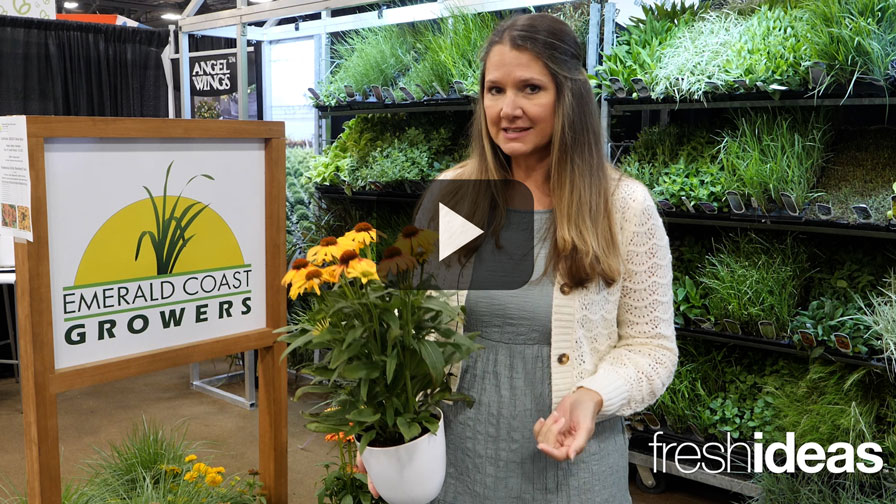5 Questions about USDA Hemp Regulations with PanXchange CEO Julie Lerner
Currently in the public comment stage, USDA’s recently issued interim final rule regarding legal commercial hemp production in the U.S. has garnered a ton of reaction from around the ag industry of late. The public comment period for the proposed regulations closes on December 31, 2019.
We talked with PanXchange’s CEO Julie Lerner to get an insider’s view on what the proposed regulations mean to this exciting, newly forming industry, and why some of the proposed regulations could be tweaked or changed in the days after the public comment period ends.
According to its website, PanXchange provides market structure solutions for the physical commodity markets that feed and fuel the world, and the company hosts digital trading platforms and price discovery portals on agricultural goods. PanXchange’s hemp-focused trading platform, PX Hemp, launched in 2019.
Greenhouse Grower (GG): What is your opinion on the 15-day THC testing harvest window and what that means for greenhouse growers?

PanXchange CEO Julie Lerner.
Julie Lerner (JL): “In the eyes of USDA the proposed timeline does limit the amount that cannabinoid profiles can change in the time between sampling and harvesting. At the same time, testing laboratories are working to scale their operations to accommodate increasing supply, as are THC remediation, hemp drying and extraction outlets. Our concern is that backlogs in the laboratories may approach or exceed the 15-day window due to a rush of tests being sent in at once.
“Outdoor and indoor cultivators are equally affected by this rule in terms of compliance; however, those growing in a greenhouse do have the ability to control environmental inputs such as temperature, humidity, hours of daylight and UV spectrum, allowing much greater control over cannabinoid profiles expressed than those growing outdoors.”
GG: Many growers have expressed trepidation at welcoming a “federal, state, local, or tribal Law enforcement officer” into their operations as part of the testing requirements under the proposed regs. Is this something you think will be tweaked after the comment period closes, and if so, how? The Drug Enforcement Administration (DEA)- approved testing lab requirement has also drawn scrutiny from growers. Any thoughts there?
JL: “From the producer’s perspective, it is intimidating to think about having the DEA directly involved with pre-harvest testing. The government has gone back and forth on whether the DEA should be involved with the US industrial hemp market and, as outlined in the 2018 Farm Bill, industrial hemp was moved from the purview of the DEA to that of the USDA after the reclassification of hemp from a controlled substance.
“Under the interim USDA rules, the DEA has been brought back into the equation. It can install law enforcement officers on site and require that a DEA-certified lab do the testing. It is hard to predict how the rules may change before they are finalized, but given the fact that the USDA has acknowledged the testing issue and the amount of industry pushback, it wouldn’t be a surprise to see some adjustments.”
GG: When you look at the current market pricing for hemp, and forecast that out to say 2021, do you think producing this crop in a greenhouse will still make financial sense in a couple years, if downward pressure on the wholesale price continues? Do you see a future where hemp becomes so commoditized that is mostly a large-scale field crop?
JL: “Although prices have decreased substantially over the past 12 months, inputs such as seeds have also experienced downward price pressure. Hemp will become a large-scale crop as demand increases from the industrial side of the market. However, this will largely be outdoor-grown, as there are fewer additional risks of unintended pollination. We believe that there will be a continued need for pharmaceutical-grade CBD that yields very high-quality specifications and no contaminants, which will garner a premium and could be economical with regards to indoor grows.”
GG: Any thoughts on the industry establishing alternative markets for “hot crops” or hemp that tests above the current 0.3% THC level? We’ve heard many producers opine that this is sorely needed…
JL: “We’ve heard various potential applications such as animal feed and others, but there isn’t any language in the proposed regulations addressing this need for farmers. The ultimate goal is to refine the variance of genetics in order to grow hemp on a consistent basis, resulting in uniform plants in terms of yield, size and cannabinoid profiles while coming in below the federal threshold of 0.3% total THC. Using hot crops for the purpose of animal feed will be hard to get approval from the Center of Veterinary Medicine (CVM). Further, using compliant crops for the purpose of animal feed is something that the CVM is reviewing, but introducing an intoxicating ingredient to livestock could be seen as unethical.”
GG: Lastly, Leafly recently released a study of various CBD containing products that is not a good reflection of the industry thus far. How can growers help ensure public trust in the hemp-derived CBD products that they produce?
JL: “A major headwind facing hemp producers is the issue of how to best market their product. This is combined with the need to ensure that the hemp sold to consumer packaged goods (CPG) manufacturers is represented in good faith. In a way, this industry is no different than the cocoa (treatment of farmers) or dairy industries (treatment of the animals), who have had their fair share of unfortunate stories come to light. Transparency from not only the end-product manufacturer but throughout the supply chain will certainly be a good start. Examples of this might be avoiding false claims such as the notion that ‘CBD cures cancer’ and correctly describing the cannabinoid content in an individual product that the consumer is paying a premium for. “










